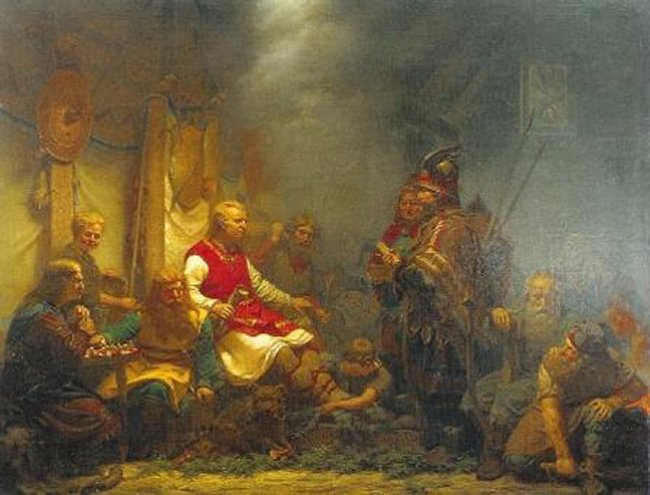Famous Viking Ragnar Lodbrok – Legendary Fearless Sea-King Of The North
A. Sutherland - AncientPages.com - There are many stories about the famous Viking Ragnar Lodbrok. He was not an ordinary pirate but a legendary and fearless Sea-King who became one of the most important Vikings in history.
What makes Lodbrok’s history unusual is that he was one of the first ‘Sea-Kings,’ which meant that he, as a Viking gained enough wealth and power through raiding to be recognized as a virtual king.
Who Was Ragnar Lodbrok?
Ragnar Lodbrok was one of the most popular Norse heroes among the Vikings. As a legendary Viking commander who became a scourge of England and France, he is often referred to as a larger-than-life character. Ragnar Lodbrok’s life and adventures are described in the Icelandic Sagas Ragnar’s Tale and The Tale of Ragnar’s Sons.
Ragnar Lodbrok (nicknamed ‘Hairy Breeches,’ referring to the animal-skin trousers that he wore) was born as the son of Sigurd Ring, who was king of both Sweden and Denmark. Ragnar himself claimed to be a direct descendant of the god Odin.
Actor Travis Fimmel plays Ragnar Lodbrok in Vikings The Saga of Ragnar Lothbrok. Credit: Imdb
Lodbrok had several children with different women. In Norway, he met the shieldmaiden Lagerda who fought together at his side. She was a fierce female warrior, and Ragnar eventually married her, and they had three children together. However, their marriage was not happy, and Ragnar traveled to Denmark, where he met the Swedish princess Tora Borgarhjort. She gave birth to two of Ragnar’s sons but died as a young woman. Lodbrok could not cope with her death for quite some time, but later, according to the Völsungasaga, he met the beautiful Queen Alsaug.
Ragnar Lodbrok Conquers Paris
On 8 June 793 C.E, Vikings attacked the Christian monastery of Lindisfarne on the English coast. They landed their longships on the shores of the Holy Island, stormed the church, killed the monks, and left with all treasures their ships could hold. The brutality displayed made them remembered and feared for many years.
This date marks the dramatic beginning of the history of the Viking empires and particularly their role in British history. It was the beginning of the Viking era and the many Viking raids of Ragnar Lodbrok, who was an enemy of Christianity. Ragnar Lodbrok deliberately attacked Christians when the soldiers were kneeling in the church during their celebrations. It was an effective method to catch the enemy off guard.
Ragnar Lodbrok led pirate raids into France many times. His most famous raid was the one he led on Paris in 845 when he commanded over five thousand warriors in a hundred and twenty longships fleet. Despite Ragnar’s strategy of attacking a holy day when churches would be full of potential victims, news of their approach had preceded his army, and most of the population had already fled. The Vikings flooded in, spreading out through the streets in search of plunder. They had been raiding Europe for five decades but never had they looted such a prize.
The Vikings took the French capital and only refrained from burning it to the ground after King Charles the Bald paid them an enormous ransom of 7,000 pounds of silver to leave.
When Ragnar Lodbrok and his warriors returned back to Denmark, they were wealthy and celebrated as heroes.
Lodbrok continued a number of successful raids against France throughout the mid-ninth century and fought numerous civil wars in Denmark.
Where And How Did Ragnar Lodbrok Die?
During his life, Ragnar Lodbrok participated in many raids. He continued fighting even as an old man.
Ælla of Northumbria's execution of Ragnar Lodbrok by Hugo Hamilton (1802–1871). Credit: Public Domain
The location where Lodbrok died remains disputed. The Icelandic sagas and early English sources state Ragnar was eventually captured by the Anglo-Saxon Christian king Aella of Northumbria. It is said that Ragnar was shipwrecked on the Northumbrian coast. He and his crew survived the wreck, but after meeting the Northumbrians in battle, most of his men were killed, and he was captured by Aelle, King of Northumbria, who ordered him executed by throwing him into a pit filled with poisonous snakes.
Ragnar's death eventually leads to the Vikings conquering the whole Danelaw. When the news of Lobdrok’s death reached his sons, they traveled to England to avenge him and kill King Aella. As part of the Treaty of Wedmore, a boundary was drawn across England from London to the Mersey. South of this line, the laws and customs would be those of the English, under the rule of the King of Wessex.
1857 painting by August Malmström depicting King Aella's messenger before Ragnar Lodbrok's sons. Credit: Public Domain
The land to the north and east of this line would be under Viking rule, with Scandinavian laws and customs. This Viking part of England became known as The Danelaw. Today, some historians refer to the Danelaw as 'Scandinavian England'.
In the Danelaw, many warriors of the Vikings' armies settled. Instead of wandering about, raiding, and plundering, they started supporting themselves by farming and trading.
Today, Ragnar Lodbrok is remembered as the legendary fearless Sea-King who was admired and hated by many.
Updated on April 14, 2022
Written by – A. Sutherland - AncientPages.com Senior Staff Writer
Copyright © AncientPages.com All rights reserved. This material may not be published, broadcast, rewritten or redistributed in whole or part without the express written permission of AncientPages.com
Expand for referencesReferences:
Blom T. Vikingar: Saga, sägen och sanning
Carlson, R. Vikings: A History of the Viking Age
More From Ancient Pages
-
 Magnificent Ancient Egyptian Gold And Soapstone Jewelry Discovered At Tell El-Amarna Necropolis
Archaeology | Dec 18, 2022
Magnificent Ancient Egyptian Gold And Soapstone Jewelry Discovered At Tell El-Amarna Necropolis
Archaeology | Dec 18, 2022 -
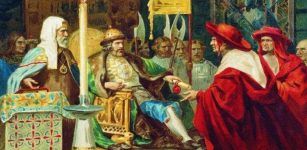 Alexander Nevsky: Grand Prince Of Novgorod, Skilled Fighter, Quick–Thinking Strategist Who Defeated Swedish And German Invaders
Featured Stories | Feb 22, 2019
Alexander Nevsky: Grand Prince Of Novgorod, Skilled Fighter, Quick–Thinking Strategist Who Defeated Swedish And German Invaders
Featured Stories | Feb 22, 2019 -
 On This Day In History: Ueshiba Morihei, The ‘Founder of Aikido’ Was Born – On Dec 14, 1883
News | Dec 14, 2016
On This Day In History: Ueshiba Morihei, The ‘Founder of Aikido’ Was Born – On Dec 14, 1883
News | Dec 14, 2016 -
 Mysterious Ancient Danube Stone Faces And The Fish Goddess Connection
Ancient Mysteries | Dec 18, 2019
Mysterious Ancient Danube Stone Faces And The Fish Goddess Connection
Ancient Mysteries | Dec 18, 2019 -
 Ancient Trans-Atlantic Emigration Theory – Not Supported By Genetic Data, Researcher Says
Archaeology | Jan 18, 2016
Ancient Trans-Atlantic Emigration Theory – Not Supported By Genetic Data, Researcher Says
Archaeology | Jan 18, 2016 -
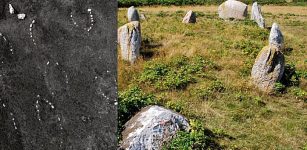 Mystery Of Viking Ship Burials In Hjarnø, Denmark And Their Unusual Design
Archaeology | Jun 1, 2021
Mystery Of Viking Ship Burials In Hjarnø, Denmark And Their Unusual Design
Archaeology | Jun 1, 2021 -
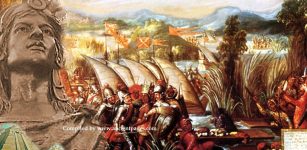 Cuauhtémoc: Brave And Determined Ruler Of Tenochtitlan And The Last Aztec Emperor
Featured Stories | Feb 28, 2018
Cuauhtémoc: Brave And Determined Ruler Of Tenochtitlan And The Last Aztec Emperor
Featured Stories | Feb 28, 2018 -
 Why Was Europe’s Oldest Battle Fought At Tollense Valley 3,000 Years Ago?
Archaeology | Oct 25, 2024
Why Was Europe’s Oldest Battle Fought At Tollense Valley 3,000 Years Ago?
Archaeology | Oct 25, 2024 -
 What Ancient Civilization Discovered Metallurgy?
Ancient Technology | Sep 19, 2017
What Ancient Civilization Discovered Metallurgy?
Ancient Technology | Sep 19, 2017 -
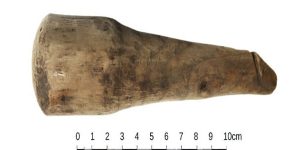 Unique Roman Artifact Discovered At Vindolanda Was More Than A Good Luck Charm
Archaeology | Feb 20, 2023
Unique Roman Artifact Discovered At Vindolanda Was More Than A Good Luck Charm
Archaeology | Feb 20, 2023 -
 Viking Fashion: Men And Women Were Vain And Very Clean During The Viking Age
Ancient History Facts | May 17, 2024
Viking Fashion: Men And Women Were Vain And Very Clean During The Viking Age
Ancient History Facts | May 17, 2024 -
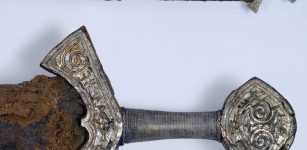 Mystery Of The Langeid Viking Sword And Its Undeciphered ‘Magical’ Inscriptions
Artifacts | Jun 4, 2022
Mystery Of The Langeid Viking Sword And Its Undeciphered ‘Magical’ Inscriptions
Artifacts | Jun 4, 2022 -
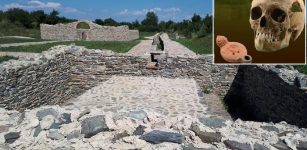 Ancient DNA Analysis Shows How The Rise And Fall Of The Roman Empire Shifted Populations In The Balkans
DNA | Dec 8, 2023
Ancient DNA Analysis Shows How The Rise And Fall Of The Roman Empire Shifted Populations In The Balkans
DNA | Dec 8, 2023 -
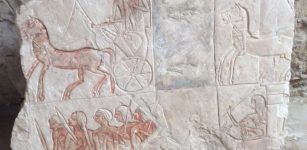 Unusual Scenes Painted On The Walls Inside Egyptian Tomb Of General Iwrkhy – Discovered
Archaeology | May 10, 2018
Unusual Scenes Painted On The Walls Inside Egyptian Tomb Of General Iwrkhy – Discovered
Archaeology | May 10, 2018 -
 On This Day In History: Alexander The Great Defeats Darius III Of Persia In The Battle Of The Granicus On May 22, 334 B.C.
News | May 22, 2016
On This Day In History: Alexander The Great Defeats Darius III Of Persia In The Battle Of The Granicus On May 22, 334 B.C.
News | May 22, 2016 -
 Gryla: Cannibalistic, Evil Troll And Her Sons ‘Yule Lads’ – In Icelandic Folklore
Christmas Traditions | Dec 23, 2024
Gryla: Cannibalistic, Evil Troll And Her Sons ‘Yule Lads’ – In Icelandic Folklore
Christmas Traditions | Dec 23, 2024 -
 Satellite Images Reveal A Mysterious Ancient Site On A Remote Island Is Much Larger Than Previously Thought, Prompting New Questions
Archaeology | Nov 28, 2024
Satellite Images Reveal A Mysterious Ancient Site On A Remote Island Is Much Larger Than Previously Thought, Prompting New Questions
Archaeology | Nov 28, 2024 -
 Secrets Of Mount Shasta – One Of The Most Sacred Places On Earth
Ancient Mysteries | Oct 24, 2015
Secrets Of Mount Shasta – One Of The Most Sacred Places On Earth
Ancient Mysteries | Oct 24, 2015 -
 400-Year-Old Shipwreck Found Off The Coast Of Portugal Labeled ‘Discovery Of A Decade’
Archaeology | Sep 26, 2018
400-Year-Old Shipwreck Found Off The Coast Of Portugal Labeled ‘Discovery Of A Decade’
Archaeology | Sep 26, 2018 -
 Pre-Columbian Pachacamac Site Dedicated To God Of Creation, Fire And Earthquakes In Inca Religion
Featured Stories | May 31, 2018
Pre-Columbian Pachacamac Site Dedicated To God Of Creation, Fire And Earthquakes In Inca Religion
Featured Stories | May 31, 2018




